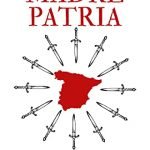
Contents
Where did the dollar, the currency and its symbol ($) come from in the US?
When the United States was born, as a country, it did not have its own currency and took Spanish dollar, the most important of the time. The $ sign that represents the US Dollar comes from the Spanish currency.
+ Hispanic Roots
A souvenir of Spain in the United States. Even its currency has Spanish history
The Dollar Symbol comes from the Columns of Hercules and the band with the text Plus Ultra
For its value and advantages, the Spanish Dollar was used in the U.S.A even after its independence in 1783 until 1857.
The Real de a 8 (Spanish Dollar) was more popular than its own currency, the US Dollar for its great advantages: great real value, international respect, less weight and finer, but with more silver.
The dollar was Spanish and was the first international currency
The US Dollar based on the Spanish Dollar
And the $ sign that represents the American dollar, also comes from the history of Spain that had been reflected in its currency
The powerful Spanish currency of the time
The Real de a 8, was represented with the two Columns of Hercules since the 15th century. This symbol began to be used during the reign of Ferdinand the Catholic, King of Aragon.
After the Independence of the U.S, the Spanish currency continued to be used in the new country for 50 years. Since it had higher quality and international prestige, it substituted the North American dollar in practice for its value, efficiency and quality.
The Spanish Dollar was used in the U.S. until 1857
The Real de a 8 (Spanish Dollar) was more popular than the US dollar itself due to its advantages: less weight and finer, but with a greater amount of silver.
It was used regularly in the 13 colonies, due to the great international prestige it had. After the Independence of the 13 colonies, the Spanish currency was the most common in the United States.
The most important coin in the history of Spain
I circle around the world for 400 years, through Europe, America, Africa and Asia
Recognized by the $ sign, successor to the very old Spanish symbol (Columns of Hercules)
Dolar, Spanish currency of the year 1757
Spanish dollar for its low weight and high quality silver was dominant for centuries

The Spanish currency (El Real de a Ocho), was known as Spanish Dollar.
From the 15th to the 19th century, Spain created the Empire with the Largest Extension in History. Its currency circulated in the Spanish colonies of Asia, the Philippines, Guam and even China.
Its currency spread, became international and circulated in the main countries of both the East and the West. The Real de a 8 was the first currency really in world use.

Representation of the Pillars of Hercules

Spanish Coin Real de a Ocho with silver from Potosí
The columns of Hercules
They originated the symbol of the Peso of New Spain
Denominated by the English as Spanish Silver Pillar Dollar (Dolar Español, Pilar de Plata)
It had 25,560 grams of pure silver, so it was highly valued for its real value.
The Spanish currency supported the 13 colonies
Paper (1776) equivalent to 4 Spanish Dollar

Paper money backed by the Spanish silver dollar
The Spanish currency the Real de a 8 was the authentic Dollar of the time.
Four Spanish milled Dollars in paper money, backed by the Spanish silver coin
It was based by necessity and credibility on the currency of Spain
Spread throughout the world, it was the first International currency
The North American paper money to get it to be accepted and had real value, during the first 70 years of the U.S, was backed by its equivalent in Spanish Dollar.
The El Real de a Ocho silver coin was the most popular currency used in the United States of America. While the US dollar was not mandatory and unique, they preferred to use the Spanish currency for its additional advantages. In world trade it was also used since the monetary reform of Spain in 1497 since it had a purity of 0.93055% higher than the currency of the 13 colonies and any of those of other countries.
Spain, the first Global Empire and its currency
Used in countries around the world
They engraved a reseal on top, to personalize it
They did it in countries like: Thailand, Zanzibar, China, Sudan, Ceylon, Australia, Burma, Saudi Arabia, etc.
Africa
Spanish currency in Zanzibar version
Asia
Spanish currency with the stamp of Thailand
Spanish currency of circulation in China
The Real de a Ocho was equivalent to 8 reales
It was traded in eighths of a dollar on the New York Stock Exchange until 1997
A reflection of the origin of the American dollar $ is the value of the shares in the Stock Market that was fixed in eighths of a dollar (Real de a 8) = 8 reales.
This need for fractions of currency, when there were no reals, was solved by physically dividing the currency into pieces, since the silver from which it was made had value in itself.
The great Mint (CECA)
It was the first Mint of America. The first mint in Mexico was created in 1535 under the mandate of Viceroy Antonio de Mendoza. For 3 centuries he controlled the manufacture of millions of coins. Its facilities were impressive, with more than 400 workers working. In 1803 by the German scholar Alexander von Humboldt, who considered it the largest in the world.
Its factory of a huge size for the time, since it needed to mint thousands of coins continuously. His coins were in high demand for being highly valued. They united the high quality of silver with the great demand and diffusion throughout the world. The Chinese emperors increased their demand, as they required their subjects to pay taxes in silver. They did not admit any other method of payment.
“It was the first truly global currency”
The discovery of the silver mines of Potosí, (Bolivia) an entire mountain (Cerro Rico) was key. It has been the largest silver deposit in the world. Various factors caused mining to have a historical increase. In the following years, since 1550, the city grew spectacularly, passing 150,000 inhabitants. Much larger than the most important European capitals of the time.
Silver was obtained through hard work in the mines, mainly from slaves or forced labor. The mortality was enormous. It was said at the time that aligning all the Real de a Ocho coins, minted, the length would be such that it would reach Spain. But it was added that if the bones of all those who had died in the mines were aligned, it would also reach Spain.
The demand for Spanish currency until the 19th century, as Chinese merchants demanded silver in all payments. For this reason, all European companies, especially English, Dutch or French, had to obtain money to be able to buy products in the Far East. The strength of the currency was such that it survived the end of the Spanish Empire. It was also important that the Spanish possessions in the Pacific Ocean, such as the Philippine Islands or Guam, were maintained until 1898.
Technological improvements together with the quality of silver and Chinese demand facilitated the increase in the production of coins. This Spanish Viceroyalty of America produced the largest amount of silver in the world, only followed at a great distance with Japan, which was also a producer but only 20% of the total.
The distribution of the currency in the East was carried out by the Manila Galleon or Galeón de la Plata, which from 1565 to 1813, connected Acapulco in Mexico with Manila in the Philippine Islands. In these islands he made purchases of products from the East, such as silk or porcelains and paid with the Royals of a Eight that he carried in quantity.
It was the first world currency and was maintained for more than 300 years, surpassing the Spanish Empire itself. And it paved the way for the currency that replaced it for the next 100 years, the British pound, currency of the British Empire.


